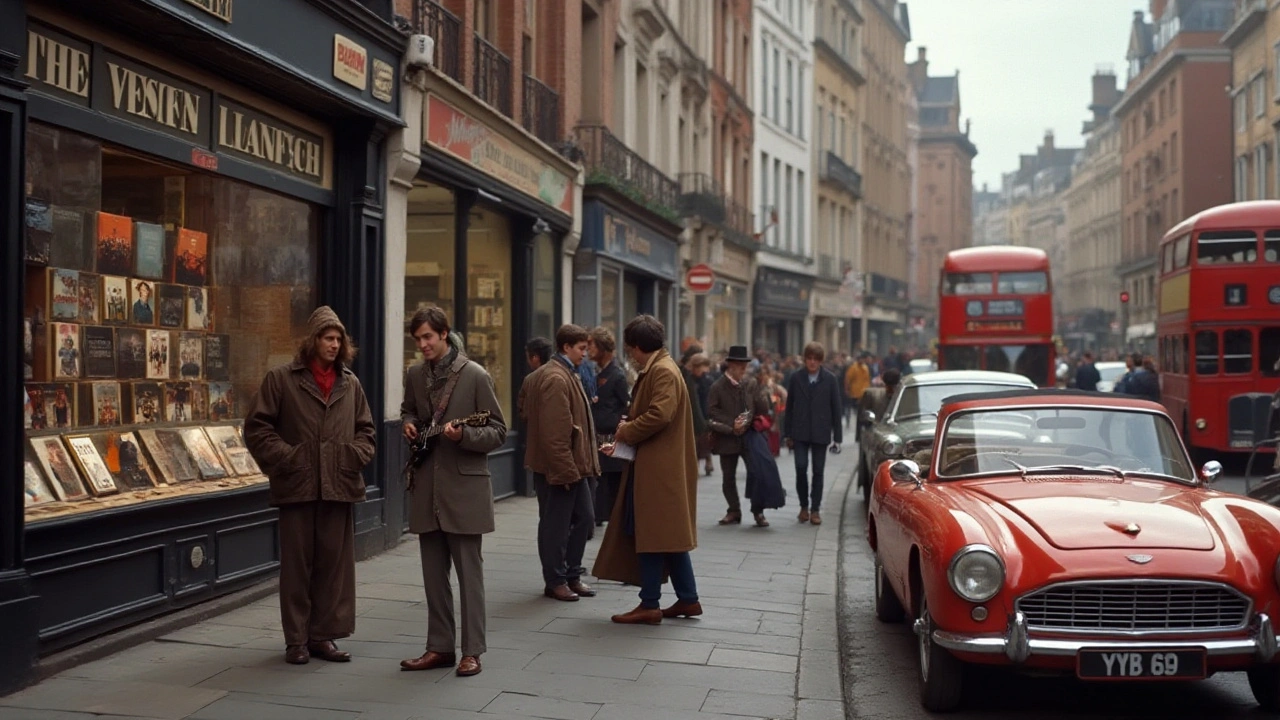Rock music is more than just a genre; it’s the heartbeat of rebellion, the soundtrack of defiance, and the rhythm of change. Its roots are deeply intertwined with societal shifts, giving a voice to the voiceless and empowering youth across generations.
From its humble origins in the blues and country music to the electric guitars and amplified sound waves that define its character, rock music has evolved through the decades. With each era, rock has echoed the sentiments of its time, from the anti-war anthems of the 1960s to the grunge movement of the 1990s.
As we delve deeper, we'll explore not just the music but the cultural revolutions it sparked, the legends it created, and how it continues to influence today’s musical landscape. Whether you're a lifelong fan or a curious newcomer, rock music’s enduring legacy offers something for everyone.
- The Origins of Rock Music
- Evolution Through the Decades
- Cultural Impact and Social Movements
- The Modern Face of Rock
The Origins of Rock Music
Rock music did not emerge from a vacuum—it was a vibrant amalgamation of various musical styles and cultural influences that converged in mid-20th century America. Rooted deeply in genres like blues, gospel, and country music, rock's early sounds were characterized by a raw, unfiltered energy that resonated with young audiences seeking an authentic voice.
The 1940s and 1950s were pivotal in this transformation. Artists like Chuck Berry and Little Richard took rhythm and blues to new heights by introducing electric guitar riffs and spirited performances. Chuck Berry's "Maybellene", released in 1955, is often cited as a seminal track that blended country and rhythm and blues, laying the groundwork for what would become rock and roll. Berry's lyrics spoke to teenage angst and freedom, themes that would define rock music for decades.
Meanwhile, singers like Elvis Presley brought the soulful essence of gospel into the edgy realm of rock. His song "Heartbreak Hotel", a 1956 hit, captivated audiences with its raw emotion and rebellious undertones. Elvis's provocative stage presence and charismatic voice made him a cultural icon, solidifying rock music's place in the mainstream.
Interestingly, the term "rock and roll" was popularized by DJ Alan Freed. Freed, who hosted a radio show in Cleveland, Ohio, played up-tempo R&B tracks that he described as, well, rock and roll. This term soon became synonymous with a musical revolution that broke racial barriers and blended sounds from different cultures. According to Freed, “Rock and roll is really swing with a modern name. It began with the blues.”
In the UK, teenagers were captivated by the American rock scene. Bands like The Beatles and The Rolling Stones soon began to emulate and evolve this bubbling genre. These British bands added their own flavor, influenced by skiffle, a genre that incorporated jazz, blues, and American folk music. This “British Invasion” in the 1960s would bring rock music back to American shores with a new, distinct sound, symbolizing a transatlantic cultural exchange.
As we trace the origins of rock music, it’s clear that it was more than just a style; it was a social phenomenon. Rock gave a platform to marginalized voices and allowed for the expression of themes such as love, rebellion, and political dissent. This genre disrupted the musical status quo and invited artists to break free from conventional molds.
Understanding the origins of rock music provides a glimpse into its enduring power and appeal. By combining elements from different musical backgrounds, rock created a universal language that continues to speak to successive generations.

Evolution Through the Decades
The story of rock music is one of constant change and adaptation, mirroring the societal shifts of each decade. It all began in the 1950s, a decade often described as the quintessential starting point. Influenced by rhythm and blues, artists like Chuck Berry and Elvis Presley brought a new sound to the radio waves, characterized by energetic beats and catchy melodies. The genre quickly gained popularity among the youth, who found in rock a means of self-expression and rebellion against the staid norms of the time.
The 1960s were a transformative period for rock music, marked by the rise of bands like The Beatles and The Rolling Stones. These groups not only captivated audiences worldwide but also utilized rock to comment on social and political issues. During this decade, rock evolved from its early roots into subgenres like psychedelic rock, which explored uncharted musical territories with the help of experimental techniques and unconventional song structures.
The 1970s saw an explosion of diversity in rock music. From the stadium-filling anthems of bands like Led Zeppelin and Queen to the gritty edges of punk rock pioneered by The Ramones and The Sex Pistols, there was something for everyone. This decade also birthed heavy metal, a more aggressive and intense offshoot of rock, with Black Sabbath at the forefront. The rise of FM radio also meant that more experimental and lengthy tracks found airplay, allowing artists to push the boundaries of what rock music could be.
By the 1980s, rock had branched out into a plethora of new subgenres. Glam rock, with its flamboyant style, became a sensation, while bands like U2 used rock music to deliver potent social messages. This decade also gave us the birth of alternative rock, a genre that would dominate the coming years. Another noteworthy development was the incorporation of new technology, such as synthesizers, which expanded the sonic palette of rock music.
The 1990s were defined by the grunge movement, led by iconic bands like Nirvana and Pearl Jam. Grunge brought a raw, unpolished sound that resonated deeply with the youth. At the same time, Britpop, exemplified by bands like Oasis and Blur, reinvigorated the UK rock scene. Rock music in the 90s was characterized by its diversity, with genres like nu-metal and pop-punk also finding huge audiences.
"Rock music transforms itself and moves forward, often contrasting with and reacting to what came before it," notes legendary rock critic Lester Bangs.
In the 2000s and 2010s, rock music continued to evolve, blending with other genres such as hip-hop and electronic music. Bands like Radiohead and The White Stripes pushed the boundaries with their innovative soundscapes and lyrical depth. Indie rock also gained prominence, with artists like Arctic Monkeys and The Strokes capturing the imagination of a new generation. Today, rock music remains as varied and vibrant as ever, continually adapting to new influences while staying true to its core values of rebellion and self-expression.

Cultural Impact and Social Movements
Rock music has been a powerful force in shaping cultural dynamics and influencing social movements. During the 1960s, rock music became closely tied with the counterculture movement, as artists used their platform to speak out against the Vietnam War, civil rights issues, and societal norms. Bands like The Beatles and The Rolling Stones not only revolutionized music but also brought attention to pressing social issues. Songs like Bob Dylan's "The Times They Are A-Changin'" became anthems for change, resonating deeply with young protestors and activists.
The 1970s and 1980s saw rock music intertwining with the feminist movement. Female rockers like Joan Jett and Stevie Nicks broke barriers in a male-dominated industry, challenging gender roles and advocating for women's rights. Rock music provided a means for women to assert their independence and express their identity in a bold and unapologetic manner. This era also witnessed the emergence of punk rock, which brought with it a raw, unrefined sound that questioned mainstream values and encouraged an anarchistic approach to life.
As the 1990s approached, the grunge movement took root, with bands like Nirvana and Pearl Jam leading the way. These artists addressed themes of alienation, depression, and the struggle against corporate greed, touching upon the anxieties of a generation disillusioned with the status quo. Rock music was more than just entertainment; it was a form of protest and a call for authenticity in a rapidly changing world. Kurt Cobain of Nirvana famously said, "I'd rather be hated for who I am, than loved for who I am not," capturing the spirit of a movement that prized honesty over popularity.
In recent years, rock music has continued to contribute to cultural conversations. From climate change activism to LGBTQ+ rights, modern rock musicians are using their platforms to advocate for a variety of causes. Artists like Billie Eilish and Greta Van Fleet are pushing boundaries, using their music to inspire activism and drive social change. Music festivals like Glastonbury and Coachella not only feature iconic rock performances but also offer spaces for political discourse and community engagement. The connection between rock music and social movements remains strong, as the genre continues to evolve and adapt to current global challenges.
Rock music’s cultural impact is not limited to just Western societies. Globally, rock has unified people across different cultures and geographies. Bands like U2 have highlighted issues like poverty and human rights on a global scale, bringing attention to causes far beyond their musical origins. Their 1985 live performance at Live Aid exemplified how rock music could mobilize millions for humanitarian efforts, demonstrating its unifying power. Music, after all, transcends boundaries, and rock has proven to be a universal language of resistance and solidarity.

The Modern Face of Rock
Rock music has come a long way from its early days when it was the edgy, new kid on the block. Today, it has evolved and adapted to stay relevant to new generations. One of the most significant changes is the blending of genres. Modern rock often includes elements of pop, electronic, and even hip-hop, creating a fresh and innovative sound that still retains the rebellious spirit of its roots.
The rise of digital platforms like Spotify and YouTube has also revolutionized how people discover and enjoy rock music. Unlike the past, where radio and TV were the primary sources of new music, today's rock artists can reach a global audience with a single click. This has democratized the music industry, allowing independent rock bands to find success without the backing of major record labels.
“Rock is there like an anchor for the world’s imagination. It constantly reinvents itself,” said John Doe, a music historian, during an interview.
The modern rock scene is also more inclusive and diverse than ever before. Artists from different backgrounds and cultures bring unique perspectives and sounds, enriching the genre. Bands like Greta Van Fleet are reviving classic rock vibes, while others like Imagine Dragons are pushing the boundaries with their experimental approaches.
Live performances continue to be a crucial part of rock's charm. Music festivals like Glastonbury and Coachella often have dedicated stages for rock bands, attracting thousands of fans. These events are not just about the music; they are cultural experiences that bring people together, reinforcing the communal aspect of rock music.
Interestingly, the resurgence of vinyl records has brought a nostalgic yet modern twist to how we experience rock music. Many young fans are discovering the joy of collecting records, connecting with the past while embracing the present. This blend of old and new ensures that rock music remains timeless.
With the advent of social media, rock musicians can directly interact with their fans, creating a more personal connection. Platforms like Instagram and TikTok allow artists to share behind-the-scenes glimpses, build their brand, and engage with their audience in real-time. This interaction fosters loyalty and creates a sense of community among fans.
Finally, the impact of rock music on fashion cannot be overlooked. The leather jackets, band tees, and rebellious hairstyles synonymous with rock culture still influence today’s fashion trends. This ongoing relationship between music and fashion underscores the lasting influence of rock as more than just a musical genre but a lifestyle.


